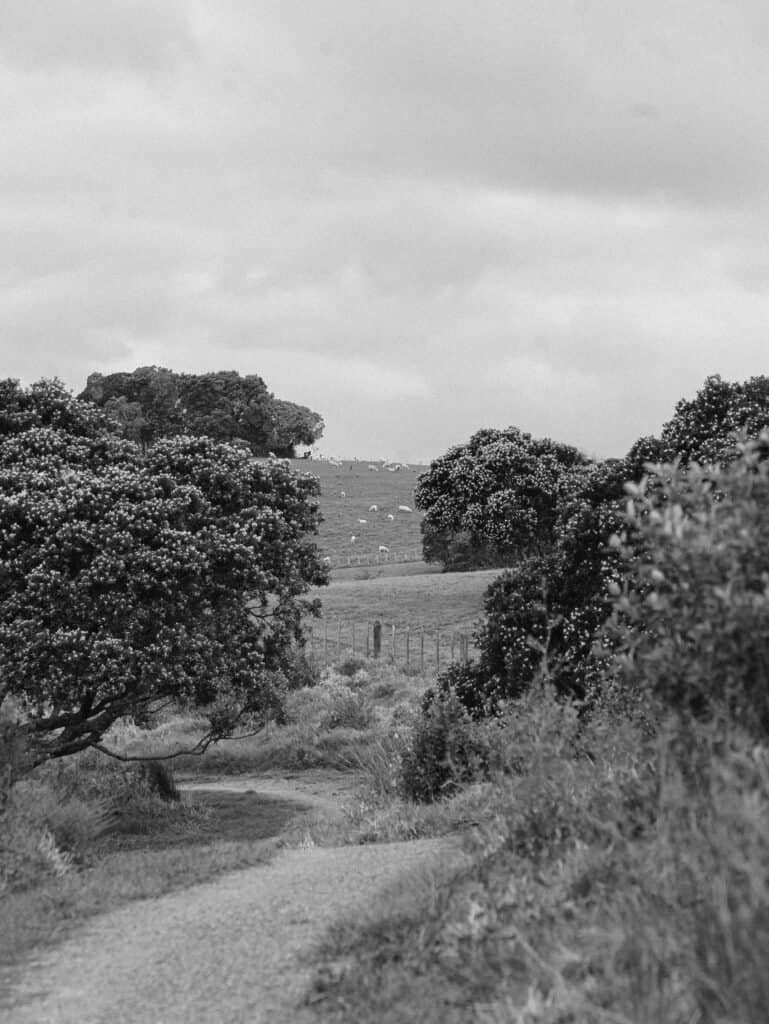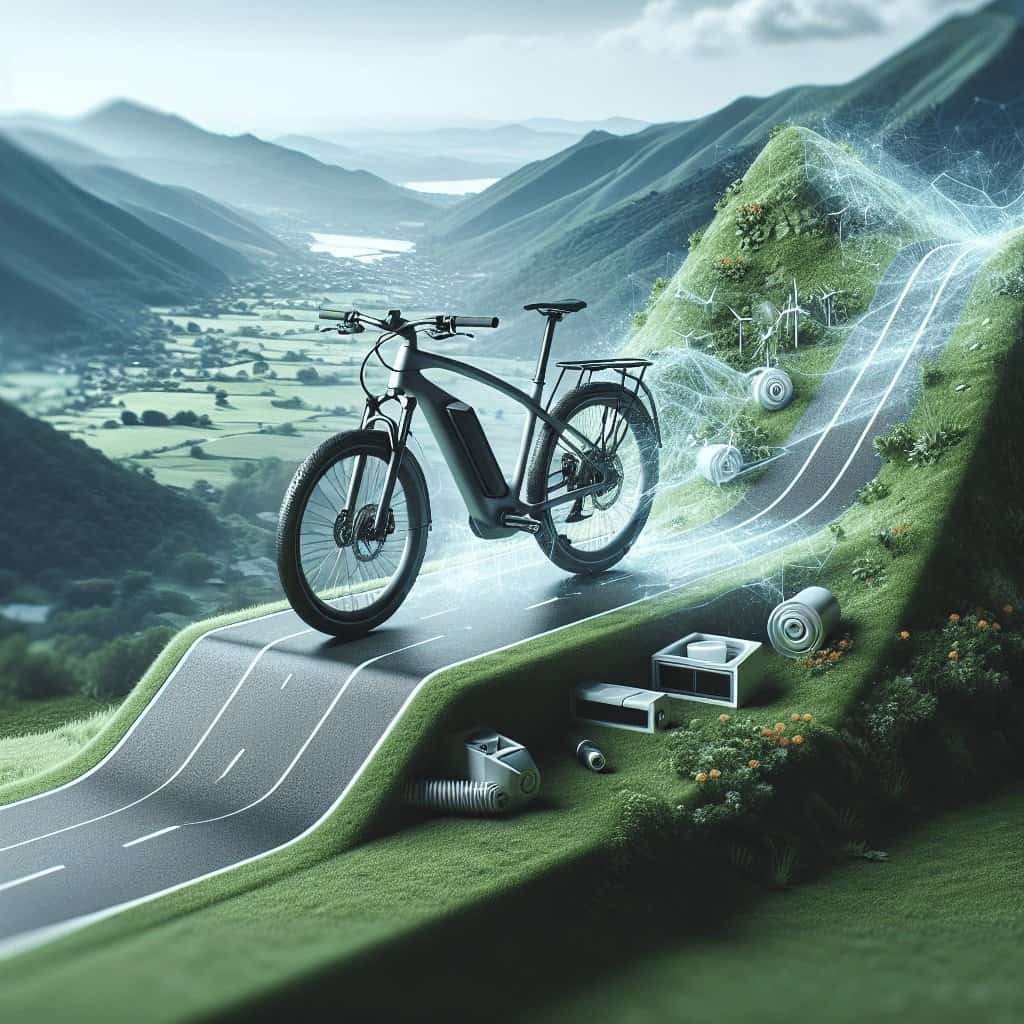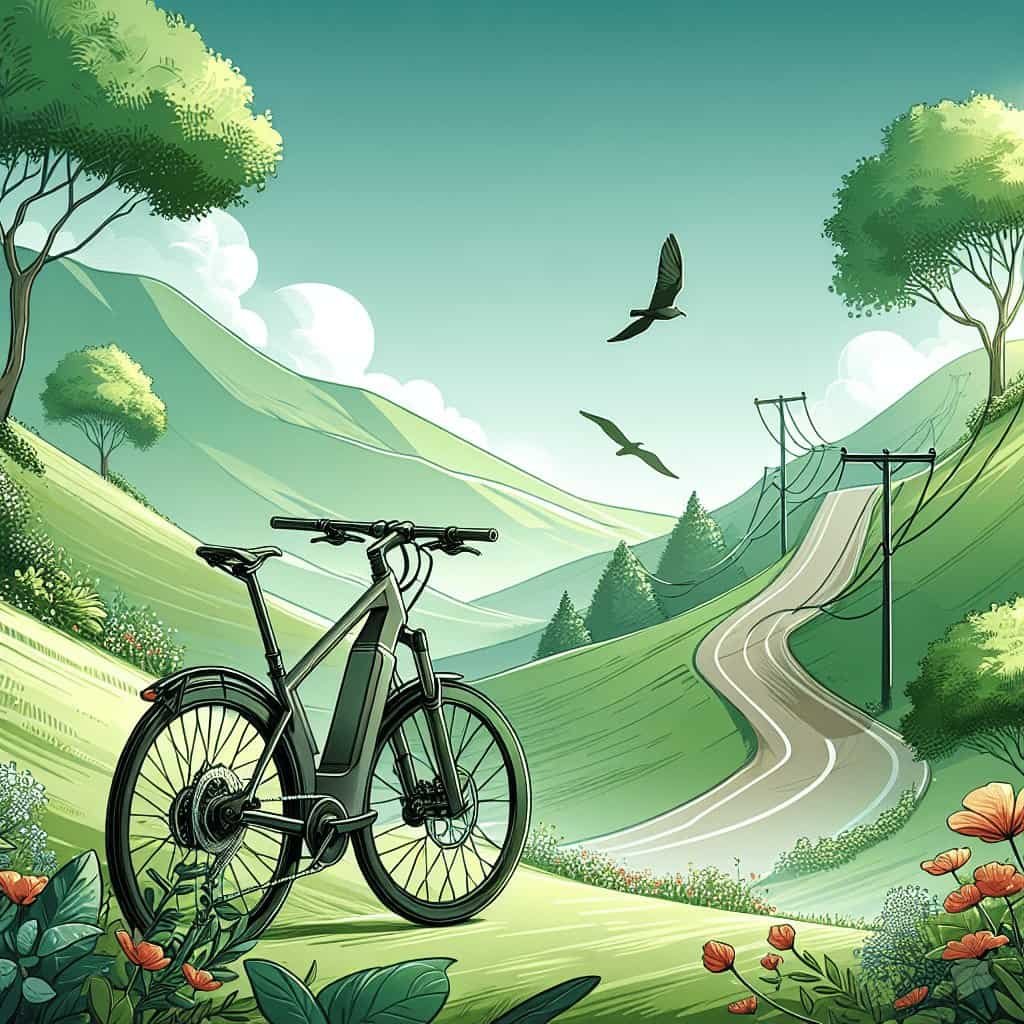So, you’re curious about how electric bikes conquer hills and inclines? Well, fret not, my friend! In this article, we’re going to delve into the fascinating mechanics and technology behind these incredible two-wheelers. We’ll uncover the secrets of their powerful motors, intelligent sensors, and advanced gear systems that work in perfect harmony to effortlessly glide up those steep slopes. Get ready to be amazed by the effortless conquering of hills that electric bikes have mastered. Let’s dive in!
Factors Affecting Performance on Hills and Inclines
When it comes to tackling hills and inclines, there are several factors that can significantly influence the performance of an electric bike. Understanding these factors is essential for choosing the right e-bike and optimizing your riding experience. In this article, we will delve into each of these factors and explore how they impact your ability to conquer those challenging terrains.
Motor Power and Torque
One of the key factors in determining the uphill performance of an electric bike is the motor power and torque. The motor is the heart of the e-bike, providing the necessary power to assist you while pedaling.
Motor Types
Firstly, it’s important to understand the different types of motors commonly found in electric bikes. There are two main types: hub motors and mid-drive motors. Hub motors are located in the wheel, either at the front or rear, while mid-drive motors are positioned near the bottom bracket, between the pedals. Each motor type has its own advantages and disadvantages, which can influence how the bike performs on hills and inclines.
Power Rating
The power rating of the motor is another significant factor to consider. The power rating is typically measured in watts and indicates how much power the motor can deliver. Higher power ratings generally translate into better uphill performance, as they provide greater assistance during climbs.
Torque
Just like power, torque plays a crucial role in determining the climbing ability of an electric bike. Torque refers to the twisting force that the motor can generate to propel the bike forward. Higher torque enables the motor to offer more assistance in overcoming steep inclines and challenging terrain.
Throttle vs. Pedal-Assist
The method of engagement between the rider and the motor greatly impacts the performance on hills. Electric bikes can come with either a throttle or pedal-assist system. A throttle allows the rider to engage the motor with a simple twist of the handle, providing constant power irrespective of the pedaling effort. On the other hand, pedal-assist systems activate the motor only when the rider pedals. The level of assistance can be adjusted based on the rider’s preference. Pedal-assist systems are often seen as more efficient and suitable for tackling hills since they require the rider to contribute to the effort.
Battery Capacity
The performance of an electric bike on hills is also closely tied to its battery capacity. The battery provides the necessary energy to power the motor and assist the rider during uphill climbs.
Battery Types
There are various battery types used in electric bikes, such as lithium-ion, lithium-polymer, and lead-acid. Lithium-ion batteries are the most common in e-bikes due to their high energy density, light weight, and long lifespan. They are capable of delivering the required power for uphill climbs more effectively.
Voltage and Amp-Hour Rating
The voltage and amp-hour rating of a battery determine its capacity. Higher voltage and amp-hour ratings are indicative of increased energy storage. A higher capacity battery will have greater endurance on uphill terrains, allowing you to cover more distance without needing frequent recharging.
Range and Discharge Rate
The range of an electric bike refers to the distance it can travel on a single charge. It is influenced by the battery capacity, the level of assistance, and various other factors. When riding on hills, the discharge rate of the battery increases due to the additional power required to overcome the incline. Understanding the battery’s discharge rate is important for planning longer rides and ensuring you have enough power to conquer those hills.
Effect of Hill Climbing on Battery Life
It’s worth noting that climbing steep hills can be taxing on the battery, as it requires the motor to provide more power for an extended period. This increased demand may lead to faster battery discharge. Therefore, it’s essential to factor in the effect of hill climbing on battery life and choose an e-bike with a battery capacity that suits your riding needs.

Weight of the E-bike and Rider
The weight of both the e-bike itself and the rider can significantly impact uphill performance. A heavier load requires more power to climb hills, and therefore, understanding the weight distribution and its effect is crucial.
E-bike Weight
The weight of the electric bike itself can vary depending on factors such as frame material, motor type, and additional components. Generally, lighter e-bikes require less power to climb hills and have better maneuverability. However, lighter bikes may sacrifice stability, especially at higher speeds.
Rider Weight
The weight of the rider is another important consideration. Heavier riders will demand more power from the motor to overcome hills, affecting overall performance. It’s important to choose an e-bike that can comfortably handle your weight, as it will play a significant role in how well the bike performs on inclines.
Weight Distribution
The distribution of weight on the e-bike also affects climbing performance. Ideally, a well-balanced weight distribution helps maintain stability and traction while climbing. Uneven weight distribution, such as a heavy load on the front or rear, can negatively impact the handling and overall climbing ability of the e-bike.
Impact on Climbing Performance
In summary, the total weight of the e-bike and rider, as well as the weight distribution, can affect climbing performance. A careful balance between lightweight design, weight distribution, and rider weight is crucial for optimal hill climbing ability.
Tire Traction and Tread
The traction and tread of the tires can make a significant difference in the e-bike’s ability to maintain grip and traction on hilly terrains.
Tire Width and Pressure
The width and pressure of the tires play a crucial role in ensuring optimal traction on hills. Wider tires generally provide better stability and grip, making them ideal for uphill climbs. Additionally, tire pressure should be adjusted according to the terrain and rider weight to ensure maximum traction and control.
Rubber Compound
The type of rubber compound used in the tire construction can affect its grip and durability. Softer rubber compounds tend to provide better traction but may wear out faster. Harder compounds, while more durable, may not offer the same level of grip on challenging surfaces.
Tread Pattern
The tread pattern on the tire surface also plays a significant role in climbing performance. Tires with aggressive tread patterns, featuring deep and widely spaced knobs, offer better traction on loose or uneven surfaces. On the other hand, slick or semi-slick tires, which have minimal tread patterns, are better suited for smoother surfaces or paved roads.
Impact on Grip and Traction
In summary, the width and pressure of the tires, along with the rubber compound and tread pattern, all contribute to the grip and traction an e-bike can maintain on hills. Choosing the right tires and adjusting the pressure according to the terrain can significantly enhance climbing performance.

Bike Geometry and Frame Design
The geometry and design of the e-bike frame are important factors in determining its climbing efficiency on hilly terrains.
Wheelbase and Stability
The wheelbase, which refers to the distance between the front and rear axles of the bike, greatly impacts stability during climbs. A longer wheelbase provides better stability, making it easier to maintain control and balance, particularly on steep inclines.
Head Tube Angle
The head tube angle, which is the angle between the front fork and the ground, influences how the e-bike handles climbs. Steeper head tube angles result in quicker turning and more responsive handling, making them suitable for aggressive climbing. On the other hand, shallower head tube angles offer better stability at higher speeds, but may be less efficient when tackling steep hills.
Bottom Bracket Height
The bottom bracket height, which refers to the distance between the ground and the area where the pedals are attached, affects the center of gravity. Higher bottom bracket heights provide more ground clearance and can prevent pedal strikes on uneven terrain, improving climbing performance.
Suspension System
The presence of a suspension system, such as front forks or rear shocks, can have a significant impact on climbing efficiency. Suspension systems absorb road vibrations and impacts, improving traction and control, especially on rough or uneven terrains. However, suspension forks can add weight to the bike, potentially impacting climbing performance.
Effect on Climbing Efficiency
In summary, the wheelbase, head tube angle, bottom bracket height, and suspension system collectively contribute to the climbing efficiency of an e-bike. Balancing stability, control, and responsiveness based on your riding style and terrain preferences is essential for a satisfying hill climbing experience.
Gearing System
The gearing system of an electric bike determines the range and efficiency with which it can tackle hills and inclines.
Gear Ratios
The gear ratios available on an e-bike influence how effectively it can tackle hills. A wider range of gear ratios generally allows for better control and flexibility when facing different gradients. Lower gear ratios provide the necessary mechanical advantage for climbing steep slopes, while higher gear ratios enable faster speeds on flatter sections.
Number of Gears
The number of gears available on an e-bike can also impact climbing performance. Bikes with a higher number of gears typically provide finer gear increments, allowing for smoother transitions between gears. This can be advantageous in maintaining a comfortable cadence while climbing varying terrain.
Low Gearing Options
E-bikes with low gearing options, such as a smaller gear front chainring and a wide-range cassette at the rear, offer better climbing capabilities. The low gears provide the mechanical advantage needed to conquer steep hills, ensuring a smoother ascent without excessive strain on the rider.
Implications on Climbing Ability
In summary, the gear ratios, number of gears, and availability of low gearing options affect an e-bike’s climbing ability. Choosing an e-bike with a suitable gearing system ensures you have the right range of options to tackle various types of climbs comfortably.

Rider’s Pedaling Power
The rider’s pedaling power and technique are critical factors in successfully conquering hills and inclines.
Cadence
Cadence refers to the speed at which the rider pedals. Maintaining an appropriate cadence while climbing is crucial for efficiency and reducing fatigue. A cadence that is too high or too low can negatively impact climbing performance. Finding the right balance that allows you to maintain a steady rhythm is key.
Efficiency
Pedaling efficiency plays a significant role in overall climbing performance. Smooth and consistent pedaling, along with proper gear selection, can maximize power transfer to the drivetrain, minimizing energy wastage. Utilizing efficient pedal strokes and avoiding unnecessary wasteful movements will help preserve energy during climbs.
Technique
Developing proper climbing techniques can greatly enhance hill climbing ability. Techniques such as utilizing standing climbs, shifting weight appropriately, and maintaining a relaxed upper body can make climbing more manageable. Practice and experimentation are essential in finding the techniques that work best for your riding style and preferences.
Optimizing Power Output
In addition to technique, optimizing power output is crucial for conquering hills. Leveraging the assistance provided by the e-bike’s motor in conjunction with your own pedaling power helps maintain momentum and minimizes strain. Understanding how to effectively utilize the pedal-assist modes and syncing your pedaling effort with the motor’s power delivery will significantly enhance your hill climbing performance.
Pedal-Assist Modes
The pedal-assist modes available on an e-bike contribute to the overall climbing performance and versatility of the bike.
Levels of Assistance
Pedal-assist modes typically offer multiple levels of assistance, allowing riders to choose the level of power output provided by the motor. These levels can range from minimal assistance to maximum power, depending on the terrain and rider’s preferences. Having a variety of assistance levels gives the rider greater control over power delivery, optimizing climbing performance.
Responsive vs. Non-responsive Assistance
Different e-bike models offer various types of pedal-assist systems. Some systems provide immediate power assistance as soon as the rider begins pedaling, while others have a slight delay or require a minimum pedaling input before engaging the motor. Understanding the responsiveness of the pedal-assist system is crucial for fine-tuning your climbing technique and adapting to different terrains.
Customizable Settings
Certain e-bike models may allow riders to customize the pedal-assist modes and parameters to suit their preferences. Customizable settings can include adjusting the power output, responsiveness, or even creating specific profiles for different riding conditions. Having the ability to tailor the assistance to your exact needs can greatly enhance your climbing performance.
Effect on Hill Climbing Performance
In summary, the pedal-assist modes available on an e-bike have a significant impact on hill climbing performance. The range of assistance levels, responsiveness, and customization options all contribute to finding the right balance between rider effort and motor assistance, enabling you to conquer hills with ease.

Hill Grade and Length
The grade and length of the hill or incline greatly influence the level of difficulty and the demands placed on the e-bike.
Hill Grade
The grade of a hill refers to the steepness or incline of the terrain. Steeper grades require more power and effort to climb, putting strain on the motor and the rider. Understanding the grade of a hill helps in choosing the right e-bike and determining the level of assistance needed to conquer it comfortably.
Hill Length
The length of the hill affects the duration of the climb. Longer hills require sustained effort and power supply from the battery. Battery capacity and discharge rate become crucial factors when tackling longer climbs to ensure you have enough power to complete the ascent.
Impact on Performance
In summary, the grade and length of the hill directly impact the performance of the e-bike and the rider. Understanding the demands of the terrain can help you select an e-bike with the appropriate motor power, battery capacity, and climbing capabilities to tackle different hill grades and lengths.
Environmental Conditions
The environmental conditions in which you ride can also affect the performance of an electric bike on hills.
Wind Speed and Direction
Wind speed and direction can have a noticeable impact on climbing performance. Headwinds, or winds blowing against the rider’s direction of travel, create additional resistance and require more power to overcome. Tailwinds, on the other hand, can provide a slight boost, making climbs a little easier. Being mindful of wind conditions can help you plan your ride and adjust your effort accordingly.
Temperature and Humidity
Temperature and humidity levels can affect the performance and efficiency of both the e-bike’s motor and the rider. Extremely hot or cold temperatures may degrade battery performance, reducing overall power output. Similarly, high humidity can make the rider more susceptible to fatigue. It’s important to consider these factors when planning rides and take appropriate measures to optimize performance.
Road Surface Conditions
Road surface conditions, such as the presence of gravel, loose dirt, or slippery surfaces, can significantly impact climbing performance. Traction and grip may be compromised on uneven or slippery terrain, affecting both the e-bike’s tires and the rider’s control. Adapting your riding technique and adjusting tire pressure accordingly can help ensure optimal performance on different road surfaces.
Effect on Performance on Hills
In conclusion, being aware of the environmental conditions and their impact on climbing performance is crucial for an enjoyable and safe ride. Taking into account factors such as wind speed and direction, temperature and humidity, and road surface conditions allows you to adapt your riding strategy and make informed decisions when conquering hills and inclines.
In summary, various factors influence the performance of an electric bike on hills and inclines. Understanding these factors, such as motor power and torque, battery capacity, weight, tire traction, bike geometry, gearing system, rider’s pedaling power, pedal-assist modes, hill grade and length, and environmental conditions, can help you choose the right e-bike and optimize your riding experience. Whether you’re an avid hill climber or simply enjoy exploring diverse terrains, considering these factors will enable you to conquer those challenging inclines with confidence and ease. Happy riding!


